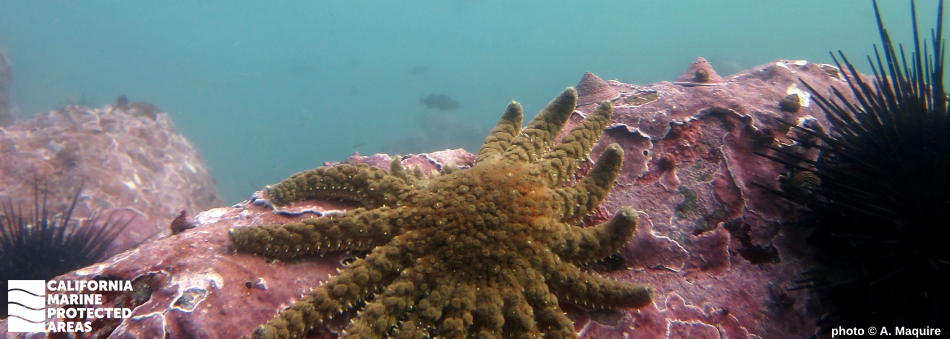
Overview
Located about 50 miles northwest of Santa Rosa, between Fisk Mill Cove and Salt Point State Park, Salt Point State Marine Conservation Area (SMCA) protects almost two square miles of ocean ecosystems. Nestled within the SMCA, Gerstle Cove State Marine Reserve (SMR) was originally established in 1974 and is one of the oldest and smallest of California’s marine protected areas (MPAs).
Within the SMCA, coastal bluffs and cliffs tower above rocky shores, protecting coves, offshore subtidal shelves, walls, and cobble habitats. These topographic structures provide critical habitat for species like red abalone, red sea urchin, and rockfish. The bull kelp attached to the rocky seafloor grows up to 10 inches per day, reaching for sunlight at the ocean's surface.
Gerstle Cove’s shallow depths are characterized by vibrant tidepools and sheltered rocky reefs, home to well-known species like lingcod and red abalone. These MPAs provide continuous land-sea protection and management in waters adjacent to Salt Point State Park, protecting diverse habitats in a highly scenic and relatively remote area for both consumptive and non-consumptive recreational purposes.
Regulations
Gerstle Cove SMR
It is unlawful to injure, damage, take, or possess any living, geological, or cultural marine resource.
California Code of Regulations Title 14, Section 632(b)(36)(opens in new tab)
Salt Point SMCA
It is unlawful to injure, damage, take, or possess any living, geological, or cultural marine resource, EXCEPT:
Recreational take of abalone and finfish is allowed. Please note that the abalone fishery is closed until at least 2026(opens in new tab).
California Code of Regulations Title 14, Section 632(b)(35)(opens in new tab)
Quick Facts
Gerstle Cove SMR
MPA size: 0.01 square miles
Shoreline span: 0.01 miles
Depth range: 0 to 10 feet
Salt Point SMCA
MPA size: 1.84 square miles
Shoreline span: 2.8 miles
Depth range: 0 to 226 feet
Habitat composition*:
- Sand/mud: 0.58 square miles
- Rock: 2.66 square miles
*Habitat calculations are based on three-dimensional area and may exceed the total MPA area listed above.